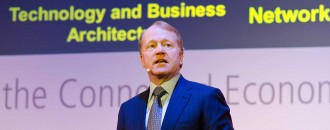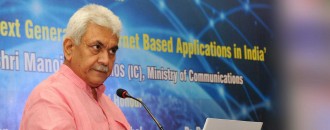
Maha Govt.: Smitten by the digital bandwagon
Sairaj Iyer
When a noted Indian film maker in a fire-side chat said that digitization is both a power and danger for the movie industry, it wouldn’t have crossed anyone’s mind about government services, to fathom how digital initiatives could impact their lives.
Although Mumbai, the capital of Maharashtra, doesn’t need any introduction to technological-preparedness and digital services, but an Indian govt office even in the cosmopolitan city cannot shirk away the image of piles and piles of paper files stacked one on top of the other! Government services are synonymous with paper chits, lengthy paper forms, that are crude and rudimentary to say the least. Digitization would seem like a manna to those in the govt offices entrusted with the herculean task of compiling the paper notes. When Vijay Kumar Gautam, the Principal Secretary of Information Technology with Government of Maharashtra (GoM) said, “the government is also an enterprise" it not only seemed inspiring for Mumbaikars but also the entire nation that the seeds of change and the best way forward in e-governance is here for good.
The Secretary was delivering a keynote, addressing an audience that had PP Chaudhary, MoS for IT, Vinit Goenka, Head-IT Task Force for Shipping & Roadways, film maker Karan Johar, Ashish Chauhan, CEO at BSE; Rajiv Srivastava, MD HP India, and nearly 150 corporate chiefs at the Enterprise Digital Technology Conference organized by Economic Times at Mumbai yesterday.
The Pr. Secy pointed out that a government entity should also be considered as an enterprise since they use digital technologies for bringing social impact. The Secretary used the conference to explain the Aaple Sarkar initiative of GoM as an example of an “enterprise driven social impact”.
The initiative has adopted a ‘1 Platform on Services’ with backend-workflow integration for offering 206 G2C services to basically process and provide information under the RTI which additionally also tackles grievance-redressal. “From 26th January 2016 to date, we have handled 80 lakh applications, with 95% on-time delivery. And from 1st January 2019, we (GoM) have a target that we will never ask any citizen any information that the state already has. To achieve this we have to go for complete enterprise architecture of the state as a whole and cannot afford to work in silos,” he explained.
Besides Aaple Sarkar, the state is gung-ho on connectivity to rural villages and panchayats that would enable better access to agriculture information, health-services, education, and basic citizen services. The secretary highlighted how Nagpur’s 776 gram panchayats have been connected with hi-end wifi network. “Our project commenced with 5 panchayats on 1st May 2016 and it has already covered 2 lakh residents from 500 gram panchayats in and around Nagpur. Citizens have found these services useful, and hence they are now requesting newer requests such as a digital library,” he said.
Speaking further, the secretary also explained that there is a need for safe cyber-activities and hence the Maha government is planning to build a volunteer base of 50,000 for propagating safe-cyber activities. He shared, “Digital is throwing challenges on cyber-security, the GoM in its advanced stage of setting up a Maharashtra state Cert-in, and to protect it as a SOC, we have our design ready, and in a couple of months, we will be pushing our cyber operations in place. There is a need to create a hygiene and culture of safe-cyber activities.”
The digital world sure sounds like opportunities-galore for India, especially in the realms of financial services, and manufacturing. Rajiv Srivastava the MD at HP-India pointed out India could find itself at the centre of the $12 trillion global manufacturing industry. “I saw a live jet being manufactured in 7 weeks using 3D printing against the conventional methods which take 7 months during a visit to the University of Monarch. As more companies join 3D printing, the factories of the world, in China, Taiwan, Korea would literally be changed. 3D is not knowledge, but software capabilities, and that is a great position for India. You can be the leader in industrial generation for many years to come. For example, if a child at a toy-store likes a toy, it can be manufactured right at the toy-store without the need to either import or stock items, and hence the disruption would be caused on the warehousing and the logistics business too,” he explained.





